Magyar és nemzetközi szakirodalom és alkalmazási területek
A hivatalos magyar és nemzetközi szakirodalom sokrétűen foglalkozik a termékben lévő összetevők hatóanyagaival kapcsolatos elméleti alapokkal, tudományos vizsgálatokkal, gyakorlati tapasztalatokkal. A tudatos fogyasztó számára kötelező tájékoztatást adnunk arról, amit megvásárol. Jelen tájékoztató a fogyasztók megfelelő és teljeskörű tájékoztatását, valamint a megalapozott és tudatos fogyasztói döntés segítését szolgálja az epesavak és a gyógynövények élettani hatásaira vonatkozó szakirodalom vázlatos bemutatásával. Jelen tájékoztató összeállítása során mindenben a fogyasztóvédelemről szóló 1997. évi CLV. törvény használati és kezelési útmutatóra vonatkozó rendelkezései, az élelmiszerláncról és hatósági felügyeletéről szóló 2008. évi XLVI. törvény élelmiszerek címkézésére vonatkozó rendelkezései és a fogyasztókkal szembeni tisztességtelen kereskedelmi gyakorlat tilalmáról szóló 2008. évi XLVII. törvény általános előírásai valamint EU 2000/13/EK és 1924/2006/EK irányelvek illetve rendeletek szerint jártunk el, szem előtt tartva a jogszabályok azon törekvését, hogy a fogyasztó a lehető legteljesebb és legrészletesebb információval rendelkezzen az általa megvásárolni szándékozott vagy már megvett termékkel és annak hatóanyagaival kapcsolatosan. A termék alapanyagaival kapcsolatos információk ismeretterjesztő célzatúak, nem utalnak a termékkel kapcsolatos összhatásokra, amit célzottan a terméktájékoztatóban találnak meg.
A GALLMET terméket mindenki saját felelősségére használja és ajánlott, hogy az orvosával is egyeztessen!
Szakirodalmi gyűjtemény az immunrendszer erősítésével kapcsolatban

- Fekete bodza (Sambucus nigra)
- Fokhagyma (Allium sativum)
- Keserű andrográfisz (Andrographis paniculata)
- Orvosi pemetefű (Marrubium vulgare)
- Kurkuma és feketebors (Curcuma longa and Piper nigrum)
- Epesavak
- A szervezet védekezőképességéhez kapcsolódó fontos szakirodalom
- COVID-19: Gastrointestinal Manifestations and Potential Fecal–Oral Transmission
- COVID-19 Infects GI Tract, a Possible Route of Viral Transmission
- Can melatonin reduce the severity of COVID-19 pandemic?
- Cytokine Storm
- Assessment report on Sambucus nigra L., fructus
- Experts send Vitamin D and Covid-19 to open letter to world’s government
- Extract of medicinal plant Artemisia annua interferes with replication of SARSCoV2 in vitro
- Glycyrrhizin in licorice root neutralizes SARSCoV2 in vitro by inhibiting the main protease
- Gram-Negative Sepsis: a Dilemma of Modern Medicine
- Gram-negative versus Gram-positive bacteremia: what is more alarmin(g)?
- Into the Eye of the Cytokine Storm
- Why Some COVID-19 Patients Crash: The Body’s Immune System Might Be To Blame?
- Selenium and RNA Virus Interactions: Potential Implications for SARS-CoV-2 Infection
- Reduction and Functional Exhaustion of T Cells in Patients With Coronavirus Disease 2019
- Epstein-barr – Mononucleosis – About Virus
- Az endotoxin élettani hatásai
- Gram negative sepsis and shock
- Multirezisztens kórokozók gyakoriságának változása és ennek vonatkozásai az intenzív osztályon
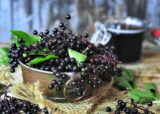
Fekete bodza (Sambucus Nigra)
A. melléklet
- Antiviral properties of Elderberry – Domina Petric, MD – Source: https://www.researchgate.net/publication/340236781_Antiviral_properties_of_Elderberry
- Botanical drugs and supplements affecting the immune response in the time of COVID‐19: Implications for research and clinical practice – Thomas Brendler, Ahmed Al‐Harrasi, Rudolf Bauer, Stefan Gafner, Mary L. Hardy, Michael Heinrich, Hossein Hosseinzadeh, Angelo A. Izzo, Martin Michaelis, Marjan Nassiri‐Asl, Alexander Panossian, Solomon P. Wasser, Elizabeth M. Williamson – Source: https://onlinelibrary.wiley.com/doi/10.1002/ptr.7008
- Inhibitory activity of a standardized elderberry liquid extract against clinically-relevant human respiratory bacterial pathogens and influenza A and B viruses – Source: Christian Krawitz1, Mobarak Abu Mraheil†, Michael Stein, Can Imirzalioglu, Eugen Domann, Stephan Pleschka, Torsten Hain – Source: http://www.biomedcentral.com/1472-6882/11/16
- Randomized study of the efficacy and safety of oral elderberry extract in the treatment of influenza A and B virus infections – Z Zakay-Rones, E Thom, T Wollan, J Wadstein – Source: https://journals.sagepub.com/doi/10.1177/147323000403200205
- Elderberry Supplementation Reduces Cold Duration and Symptoms in Air-Travellers: A Randomized, Double-Blind Placebo-Controlled Clinical Trial – Evelin Tiralongo, Shirley S. Wee, Rodney A. Lea – Source: https://www.ncbi.nlm.nih.gov/pmc/articles/PMC4848651/
- Inhibition of several strains of influenza virus in vitro and reduction of symptoms by an elderberry extract (Sambucus nigra L.) during an outbreak of influenza B/Panama – Z Zakay-Rones, N Varsano, M Zlotnik, O Manor, L Regev, M Schlesinger, M Mumcuoglu https://pubmed.ncbi.nlm.nih.gov/9395631/
- Sambucus nigra extracts inhibit infectious bronchitis virus at an early point during replication – Christie Chen, David M Zuckerman, Susanna Brantley, Michka Sharpe, Kevin Childress, Egbert Hoiczyk and Amanda R Pendleton – Source: https://bmcvetres.biomedcentral.com/articles/10.1186/1746-6148-10-24
- Potential anti-influenza effective plants used in Turkish folk medicine: A review – Seyid Ahmet Sargin – Source: https://www.ncbi.nlm.nih.gov/pmc/articles/PMC7458060/
- Black elderberry (Sambucus nigra) supplementation effectively treats upper respiratory symptoms – A meta-analysis of randomized, controlled clinical trials – Jessie Hawkins, Colby Baker, Lindsey Cherry, Elizabeth Dunne – Source: https://pubmed.ncbi.nlm.nih.gov/30670267/

Fokhagyma (Allium Sativum)
B. melléklet
- Anti-hyperlipidemia of garlic by reducing the level of total cholesterol and low-density lipoprotein A meta-analysis – Yue-E Sun PhD, Weidong Wang PhD, Jie Qin MS – Source: https://www.ncbi.nlm.nih.gov/pmc/articles/PMC6392629/
- Antiviral potential of garlic (Allium sativum) and its organosulfur compounds: A systematic update of pre-clinical and clinical data – Razina Rouf, Shaikh Jamal Uddin, Dipto Kumer Sarker, Muhammad Torequl Islam, Eunus S. Ali, Jamil A. Shilpi, Lutfun Nahar, Evelin Tiralongo, and Satyajit D. Sarkerf – Source: https://www.ncbi.nlm.nih.gov/pmc/articles/PMC7434784/
- Chemical Constituents and Pharmacological Activities of Garlic (Allium sativum L.): A Review – Gaber El-Saber Batiha, Amany Magdy Beshbishy, Lamiaa G. Wasef, Yaser H. A. Elewa, Ahmed A. Al-Sagan, Mohamed E. Abd El-Hack, Ayman E. Taha, Yasmina M. Abd-Elhakim and Hari Prasad Devkota – Source: https://pubmed.ncbi.nlm.nih.gov/32213941/
- Assessment report on Allium sativum L., bulbus – Jacqueline Viguet Poupelloz, Lotfi Boudali, Denis Boucaud-Maitre, Elsa Grangier, Ioanna Chinou – Source: https://www.ema.europa.eu/documents/herbal-report/final-assessment-report-allium-sativum-l-bulbus_en.pdf
- Efficacy of Garlic and Onion against virus – Neha Sharma – Source: https://pharmascope.org/index.php/ijrps/article/view/1738
- Garlic (Allium sativum L.): a potential unique therapeutic food rich in organosulfur and flavonoid compounds to fight with COVID-19 – Sucheta Khubber, Reza Hashemifesharaki, Mehrdad Mohammadi, Seyed Mohammad, Taghi Gharibzahedi – Source: https://www.ncbi.nlm.nih.gov/pmc/articles/PMC7673072/
- Garlic for hypertension: A systematic review and meta-analysis of randomized controlled trials – X J Xiong, P Q Wang, S J Li, X K Li, Y Q Zhang, J Wang – Source: https://pubmed.ncbi.nlm.nih.gov/25837272/
- Garlic intake and the risk of colorectal cancer – A meta-analysis– Xi Zhou PhDa, Haihua Qian PhDb, Dan Zhang PhDb, Li Zeng PhDa – Source: https://pubmed.ncbi.nlm.nih.gov/31895803/
- Garlic Lowers Blood Pressure in Hypertensive Individuals, Regulates Serum Cholesterol, and Stimulates Immunity: An Updated Meta-analysis and Review – Karin Ried – Source: https://pubmed.ncbi.nlm.nih.gov/26764326/
- Garlic consumption and colorectal cancer risk in man: a systematic review and meta-analysis– Manuela Chiavarini, Liliana Minelli, Roberto Fabiani – Source: https://pubmed.ncbi.nlm.nih.gov/25945653/
- Identification of potential inhibitors of SARS-CoV-2 main protease and spike receptor from 10 important spices through structure-based virtual screening and molecular dynamic study – Debanjan Sen, Pradip Debnath, Bimal Debnath, Samhita Bhaumik, and Sudhan Debnath – Source: https://www.ncbi.nlm.nih.gov/pmc/articles/PMC7544938/
- The effects of allium sativum on immunity within the scope of COVID-19 infection – Mustafa Metin Donmaa, Orkide Donmab https://www.ncbi.nlm.nih.gov/pmc/articles/PMC7265825/
- The association of garlic with Helicobacter pylori infection and gastric cancer risk: A systematic review and meta-analysis – Ziyu Li, Xiangji Ying, Fei Shan, Jiafu Ji https://pubmed.ncbi.nlm.nih.gov/30155945/
- Safe and Efficacious Anti-Cytomegalovirus Agents with Therapeutic Activity in vitro – Khalid A. El-Dougdoug, Ahmed R. Sofy, Adel A. Mousa, Mahmoud R. Sofy, Ahmed A. Hmed, Ahmed A. Abbas – Source: http://article.sapub.org/10.5923.j.microbiology.20180802.02.html
- Review: antimicrobial properties of allicin used alone or in combination with other medications – Sulin Choo, Voon Kin Chin, Eng Hwa Wong, Priya Madhavan, Sun Tee Tay, Phelim Voon Chen Yong & Pei Pei Chong – Source: https://pubmed.ncbi.nlm.nih.gov/32207097/
- Preventing the common cold with a garlic supplement: a double-blind, placebo-controlled survey – P Josling – Source: https://pubmed.ncbi.nlm.nih.gov/11697022/
- Plants of the genus Allium as antibacterial agents: From tradition to pharmacy – J Sharifi‐Rad, D Mnayer, G Tabanelli, Z Z Stojanović‐Radić, M Sharifi‐Rad, Z Yousaf, L Vallone, W N Setzer, M Iriti – Source: https://pubmed.ncbi.nlm.nih.gov/27585263/
- Natural products as home-based prophylactic and symptom management agents in the setting of COVID-19 – Sai Manohar Thota – Venkatesh Balan – Venketesh Sivaramakrishnan – Source: https://onlinelibrary.wiley.com/doi/10.1002/ptr.6794
- Allicin as add-on therapy for Helicobacter pylori infection: A systematic review and meta-analysis– Xiao-Bei Si, Xu-Min Zhang, Shuai Wang, Yu Lan, Shuo Zhang, Lin-Yu Huo – Source: https://pubmed.ncbi.nlm.nih.gov/31660038/
- Cholesterol-Lowering Effect of Allicin on Hypercholesterolemic ICR Mice – Yin Lu, Zhuojin He, Xiuying Shen, Xiaolu Xu, Jie Fan, Shaohua Wu and Deyong Zhang – Source: https://www.ncbi.nlm.nih.gov/pmc/articles/PMC3425886/
- COVID-19: Is There Evidence for the Use of Herbal Medicines as Adjuvant Symptomatic Therapy? – Dâmaris Silveira,*† Jose Maria Prieto-Garcia,*† Fabio Boylan, Omar Estrada, Yris Maria Fonseca-Bazzo, Claudia Masrouah Jamal, Pérola Oliveira Magalhães, Edson Oliveira Pereira, Michal Tomczyk, and Michael Heinrich*† – Source: https://www.ncbi.nlm.nih.gov/pmc/articles/PMC7542597/
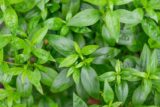
Keserű andrográfisz (Andrographis paniculata)
C. melléklet
- Andrographis paniculata Extract (HMPL-004) for Active Ulcerative Colitis – William J Sandborn, Stephan R Targan, Vera S Byers, Dean A Rutty, Hua Mu, Xun Zhang, Tom Tang – Source: https://www.ncbi.nlm.nih.gov/pmc/articles/PMC3538174/
- Andrographis paniculata (Burm. f.) Wall. ex Nees: A Review of Ethnobotany, Phytochemistry, and Pharmacology – Md. Sanower Hossain, Zannat Urbi, Abubakar Sule, and K. M. Hafizur Rahman – Source: https://www.ncbi.nlm.nih.gov/pmc/articles/PMC4408759/
- Andrographolide and its fluorescent derivative inhibit the main proteases of 2019-nCoV and SARS-CoV through covalent linkage – Tzu-Hau Shi, Yi-Long Huang, Chiao-Che Chen, Wen-Chieh Pi, Yu-Ling Hsu, Lee-Chiang Lo, Wei-Yi Chen, Shu-Ling Fu, Chao-Hsiung Lina – Source: https://www.ncbi.nlm.nih.gov/pmc/articles/PMC7447262/
- Andrographolide as a potent and promising antiviral agent – Reshi Latif, Chi-Yong Wang – Source: https://pubmed.ncbi.nlm.nih.gov/33039055/
- Andrographolide as a potential inhibitor of SARS-CoV-2 main protease: an in silico approach – Sukanth Kumar Enmozhia, Kavitha Rajaa, Irudhayasamy Sebastineb and Jerrine Josephc – Source: https://www.tandfonline.com/doi/full/10.1080/07391102.2020.1760136
- Broad-spectrum antiviral properties of andrographolide – Swati Gupta, K P Mishra, Lilly Ganju – Source: https://pubmed.ncbi.nlm.nih.gov/27896563/
- Fah Talai Jone proven effective in improving condition of COVID-19 patients – DTAM– Source: https://www.thaipbsworld.com/fah-talai-jone-proven-effective-in-improving-condition-of-covid-19-patients-dtam/
- Harnessing the medicinal properties of Andrographis paniculata for diseases and beyond: a review of its phytochemistry and pharmacology – Agbonlahor Okhuarobo, Joyce Ehizogie Falodun, Osayemwenre Erharuyi, Vincent Imieje, Abiodun Falodun and Peter Langer – Source: https://www.ncbi.nlm.nih.gov/pmc/articles/PMC4032030/
- Randomised clinical trial: herbal extract HMPL-004 in active ulcerative colitis – a double-blind comparison with sustained release mesalazine – T Tang, S R Targan, Z-S Li, C Xu, V S Byers, W J Sandborn – Source: https://pubmed.ncbi.nlm.nih.gov/21114791/
- COVID-19: Is There Evidence for the Use of Herbal Medicines as Adjuvant Symptomatic Therapy? – Dâmaris Silveira,*† Jose Maria Prieto-Garcia,*† Fabio Boylan, Omar Estrada, Yris Maria Fonseca-Bazzo, Claudia Masrouah Jamal, Pérola Oliveira Magalhães, Edson Oliveira Pereira, Michal Tomczyk, and Michael Heinrich*† – Source: https://www.ncbi.nlm.nih.gov/pmc/articles/PMC7542597/
- Thailand Clears Use of Herbal Medicine for Covid-19 Treatment – Suttinee Yuvejwattana – Source: https://www.bloomberg.com/news/articles/2020-12-30/thailand-clears-use-of-herbal-medicine-for-covid-19-treatment
- A randomized double blind placebo controlled clinical evaluation of extract of Andrographis paniculata (KalmCold™) in patients with uncomplicated upper respiratory tract infection – R.C. Saxena, R. Singh, P. Kumar, S.C. Yadav, M.P.S. Negi, V.S. Saxena, A.J. Joshua, V. Vijayabalaji, K.S. Goudar, K. Venkateshwarlu, A. Amit – Source: https://www.sciencedirect.com/science/article/abs/pii/S0944711309003201?via%3Dihub
- A randomized, controlled study of Kan Jang versus amantadine in the treatment of influenza in Volgograd – L L Kulichenko 1, L V Kireyeva, E N Malyshkina, G Wikman – Source: https://pubmed.ncbi.nlm.nih.gov/15277072/
- Natural products as home-based prophylactic and symptom management agents in the setting of COVID-19 – Sai Manohar Thota – Venkatesh Balan – Venketesh Sivaramakrishnan – Source: https://onlinelibrary.wiley.com/doi/10.1002/ptr.6794
- Activity of phytochemical constituents of Curcuma longa (turmeric) and Andrographis paniculata against coronavirus (COVID-19): an in silico approach – Kalirajan Rajagopal, Potlapati Varakumar, Aparma Baliwada, Gowramma Byran – Source: https://fjps.springeropen.com/articles/10.1186/s43094-020-00126-x
- Review on liver inflammation and antiinflammatory activity of Andrographis paniculata for hepatoprotection – Lee Suan Chua – Source: https://pubmed.ncbi.nlm.nih.gov/25043965/
- Andrographis paniculata (Chuān Xīn Lián) for symptomatic relief of acute respiratory tract infections in adults and children: A systematic review and meta-analysis – Xiao-Yang Hu, Ruo-Han Wu, Martin Logue, Clara Blondel, Lily Yuen Wan Lai, Beth Stuart, Andrew Flower, Yu-Tong Fei, Michael Moore, Jonathan Shepherd, Jian-Ping Liu, and George Lewith – Source: https://www.ncbi.nlm.nih.gov/pmc/articles/PMC5544222/

Orvosi pemetefű (Marrubium vulgare)
D. melléklet
- An Insight into a Blockbuster Phytomedicine; Marrubium vulgare L. Herb. More of a Myth than a Reality? – Javier Rodríguez Villanueva, Jorge Martín Esteban – Source: https://pubmed.ncbi.nlm.nih.gov/27271209
- Phytochemical screening and antiviral activity of Marrubium vulgare – Amal Gaber Salman Fayyad, Nazlina Ibrahim and Wan Ahmad Yaakob – Source: https://mjm.usm.my/uploads/issues/351/5%20Corrected%20proof%20MJM%20580-13.pdf
- Marrubium vulgare L.: A Phytochemical and Pharmacological Overview – Milica Aćimović, Katarina Jeremić, Nebojša Salaj, Neda Gavarić, Biljana Kiprovski, Vladimir Sikora, Tijana Zeremski – Source: https://www.ncbi.nlm.nih.gov/pmc/articles/PMC7355696/
- Chemical Characterization and Antibacterial Activity of Phases Obtained from Extracts of Artemisia herba alba, Marrubium vulgare and Pinus pinaster – Zouhir Djerrou – Source: https://www.researchgate.net/publication/273371357_Chemical_Characterization_and_Antibacterial_Activity_of_Phases_Obtained_from_Extracts_of_Artemisia_herba_alba_Marrubium_vulgare_and_Pinus_pinaster
- Evaluation of in vitro antioxidant and in vivo anti-inflammatory potentialof white Horehound (Marrubium vulgare) Leaves – N. Ghedadba, Leila Hambaba, Haoues Bousselsela, M. Hachemi – Source: https://www.researchgate.net/publication/311206266_Evaluation_of_in_vitro_antioxidant_and_in_vivo_anti-inflammatory_potentialof_white_Horehound_Marrubium_vulgare_Leaves
- A methanolic extract of Marrubium vulgare L. suppresses inflammatory responses in isoproterenol induced myocardial infarction in rat – M. Rameshrad, K. Yousefi, F. Fathiazad, H. Soraya, S. Hamedeyazdan, A. Khorrami, N. Maleki-Dizaji, A. Garjani – Source: http://www.rps.mui.ac.ir/index.php/jrps/article/view/977/961
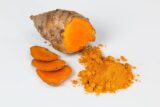
Kurkuma és feketebors (Curcuma longa and Piper nigrum)
E. melléklet
- Curcuma longa L. ameliorates asthma control in children and adolescents: A randomized, double-blind, controlled trial – Gabriel Manarina, Daniela Andersona, Jorgete Maria e Silvaa, Juliana da Silva Coppedeb, Persio Roxo-Juniora, Ana Maria Soares Pereirab, Fabio Carmona – Source: https://pubmed.ncbi.nlm.nih.gov/30991137/
- Immunomodulatory activity of curcumin – S Antony, R Kuttan, G Kuttan – Source: https://pubmed.ncbi.nlm.nih.gov/10574627/
- Botanical drugs and supplements affecting the immune response in the time of COVID‐19: Implications for research and clinical practice – Thomas Brendler, Ahmed Al‐Harrasi, Rudolf Bauer, Stefan Gafner, Mary L. Hardy, Michael Heinrich, Hossein Hosseinzadeh, Angelo A. Izzo, Martin Michaelis, Marjan Nassiri‐Asl, Alexander Panossian, Solomon P. Wasser, Elizabeth M. Williamson – Source: https://onlinelibrary.wiley.com/doi/10.1002/ptr.7008
- Curcuma longa L. ameliorates asthma control in children and adolescents: A randomized, double-blind, controlled trial – Gabriel Manarina, Daniela Andersona, Jorgete Maria e Silvaa, Juliana da Silva Coppedeb, Persio Roxo-Juniora, Ana Maria Soares Pereirab, Fabio Carmona – Source: https://pubmed.ncbi.nlm.nih.gov/30991137/
- Curcumin, a traditional spice component, can hold the promise against COVID 19? – Vivek Kumar Sonia, Arundhati Mehta, Yashwant Kumar Ratre, Atul Kumar Tiwari, Ajay Amit, Rajat Pratap Singh, Subash Chandra Sonkar, Navaneet Chaturvedi, Dhananjay Shukla, Naveen Kumar Vishvakarma – Source: https://www.sciencedirect.com/science/article/abs/pii/S0014299920306439
- Curcumin Attenuates Allergen-Induced Airway Hyperresponsiveness in Sensitized Guinea Pigs – Arjun RAM, Moumita DAS, Balaram GHOSH – Source: https://pubmed.ncbi.nlm.nih.gov/12843631/
- Curcumin attenuates allergic airway inflammation and hyper-responsiveness in mice through NF-kB inhibition – Se-Woong Oha, Joo-Young Chaa, Ji-Eun Junga, Beom-Chol Changa, Hyo-Jung Kwonb, Bo-Ram Leeb, Dae-Yong Kimb – Source: https://pubmed.ncbi.nlm.nih.gov/20643202/
- Curcumin (a constituent of turmeric): New treatment option against COVID-19 – Fatemeh Babaei, Marjan Nassiri-As, Hossein Hosseinzadeh – Source: https://onlinelibrary.wiley.com/doi/10.1002/fsn3.1858
- Effects of Turmeric (Curcuma longa) Extract in streptozocin-induced diabetic model – Rana Essa, Ahmed M El Sadek, Marine E Baset, Mohamed A Rawash, Diana G Sami, Marwa T Badawy, Maha E Mansour, Hamdino Attia, Mona K Saadeldin, Ahmed Abdellatif – Source: https://pubmed.ncbi.nlm.nih.gov/31489664/
- Efficacy and safety of turmeric and curcumin in lowering blood lipid levels in patients with cardiovascular risk factors: a meta-analysis of randomized controlled trials – Si Qin, Lifan Huang, Jiaojiao Gong, Shasha Shen, Juan Huang, Hong Ren, and Huaidong Hu – Source: https://www.ncbi.nlm.nih.gov/pmc/articles/PMC5637251/
- Efficacy of Curcumin as Adjuvant Therapy to Induce or Maintain Remission in Ulcerative Colitis Patients: an Evidence-based Clinical Review – Marcellus Simadibrata, Christopher Christian Halimkesuma, Benedicta Mutiara Suwita – Source: http://www.actamedindones.org/index.php/ijim/article/view/520/pdf
- Efficacy of Turmeric Extracts and Curcumin for Alleviating the Symptoms of Joint Arthritis: A Systematic Review and Meta-Analysis of Randomized Clinical Trials – James W. Daily, Mini Yang, and Sunmin Park – Source: https://www.ncbi.nlm.nih.gov/pmc/articles/PMC5003001/
- IMMUNOMODULATORY ACTIVITY OF CURCUMIN – S. Antony, R. Kuttan and G. Kuttan, Amala Cancer Research Centre, Amala Nagar, Thrissur – Source: https://pubmed.ncbi.nlm.nih.gov/10574627/
- Influence of piperine on the pharmacokinetics of curcumin in animals and human volunteers – G Shoba, D Joy, T Joseph, M Majeed, R Rajendran, P S Srinivas – Source: https://pubmed.ncbi.nlm.nih.gov/9619120/
- Vasodilating, spasmolytic, inotropic and chronotropic activities of curcuminoids from Curcuma longa in isolated organ preparations of guinea pigs – Q U A Jamil, S M Iqbal, W Jaeger, C Studenik – Source: https://pubmed.ncbi.nlm.nih.gov/30279307/
- The clinical effect of Nano micelles containing curcumin as a therapeutic supplement in patients with COVID-19 and the immune responses balance changes following treatment: A structured summary of a study protocol for a randomised controlled trial – Mehdi Hassaniazad, Behnaz Rahnama Inchehsablagh, Hossein Kamali, Abdolali Tousi, Ebrahim Eftekhar, Mahmoud Reza Jaafari, Mohammad Fathalipour, Sara Nikoofal-Sahlabadi, Hamed Gouklani, Hesam Alizade1 and Amin Reza Nikpoor – Source: https://trialsjournal.biomedcentral.com/articles/10.1186/s13063-020-04824-y
- Potential effects of curcumin in the treatment of COVID-19 infection – Fatemeh Zahedipour†, Seyede Atefe Hosseini†, Thozhukat Sathyapalan, Muhammed Majeed, Tannaz Jamialahmadi, Khalid Al-Rasadi, Maciej Banach, Amirhossein Sahebkar – Source: https://onlinelibrary.wiley.com/doi/full/10.1002/ptr.6738
- Postprandial Responses of Serum Bile Acids in Healthy Humans after Ingestion of Turmeric before Medium/High-Fat Breakfasts-fat_breakfasts – Tannaz Ghaffarzadegan, Yoghatama Cindya Zanzer Elin Östman Frida Hållenius, Sofia Essén, Margareta Sandahl, Margareta Nyman – Source: https://pubmed.ncbi.nlm.nih.gov/31411373/
- Oral bioavailability of curcumin: problems and advancements – Weidong Liu, Yingjie Zhai, Xueyuan Heng, Feng Yuan Che, Wenjun Chen, Dezhong Sun, Guangxi Zhai – Source: https://www.tandfonline.com/doi/full/10.3109/1061186X.2016.1157883
- Activity of phytochemical constituents of Curcuma longa (turmeric) and Andrographis paniculata against coronavirus (COVID-19): an in silico approach – Kalirajan Rajagopal, Potlapati Varakumar, Aparma Baliwada, Gowramma Byran – Source: https://fjps.springeropen.com/articles/10.1186/s43094-020-00126-x
- Turmeric(Curcumalonga) attenuates food allergy symptoms by regulating type1/type2 helper Tcells (Th1/Th2) balanceinamouse model of food allergy – Hee SoonShin, Hye-JeongSee, SunYoungJung, DaeWoonChoi, Da-AeKwona, Min-Jung Bae, Ki-SeungSung, Dong-HwaShon – Source: https://pubmed.ncbi.nlm.nih.gov/26342520/
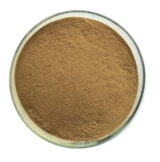
Epesavak
F. melléklet
- Dr. Tihanyi István (orvos, iridológus, gyermekgyógyász, természetgyógyász): Epesavak – Forrás: http://www.doktortihanyi.hu/betegseg/epesavak – 2014
- Dr. Bertók Lóránd professzor: Kutatói élete (PDF) – Forrás: ismeretlen
- Dr. Bertók Lóránd professzor: Tudományos publikációi – Forrás: ismeretlen
- Dr. Bertók Lóránd professzor: Endotoxin és biológiai hatásai – Forrás: Studio Physiologia 3, Scientia Kiadó, Budapest – 2000
- Dr. Bertók Lóránd professzor az orvostudomány (MTA) doktora, címzetes egyetemi tanár: Az Epesavak szerepe a szervezet fiziko-kémiai védelmében – Forrás: Magyar Tudomány, 2008/07 844. oldal – 200
- Balog Károly: Van-e gyógyszer a szepszis ellen? – Forrás: ismeretlen
- Dr. Tóth Gábor: Allergia- és Candida-kalauz – Forrás: Tudomány és életmód sorozat – 2014
- Dr. Bertók Lóránd professzor: Bakteriális endotoxinok és természetes ellenálló képesség – Forrás: Magyar Állatorvosok Lapja 1992/11 – 1992
- Dr. Jeffrey McCombs – A kiropraktika doktora: 10 mendemonda a Candidával kapcsolatban – Forrás: ismeretlen
- Diavitás Magazin: Közvetlen összefüggést találtak egy baktérium toxin és a kolorektális daganatok között (PDF) – Forrás: https://www.diavitas.hu/kozvetlen-osszefuggest-talaltak-egy-bakterium-toxin-es-a-kolorektalis-daganatok-kozott – 2020
- Dr Bertók Lóránd professzor: Endotoxin és biológiai hatásai (PDF) – Forrás: Studia Physiologia 3, 1997, Scientia Kiadó Budapest – 1997
- Az epesav okozta megbetegedések terápiájának új irányai (PDF) – Forrás: https://aok.pte.hu/hu/hirek/hir/10510
- Endotoxin (PDF) – Forrás: http://patikapedia.hu/endotoxin
- Epesavvesztés (PDF) – Természetgyógyász Magazin – Forrás: http://tgy-magazin.hu/betegsegek-a-tol-z-ig/epeko-es-funkcionalis-epezavarok
- Dr. Klára Gyurcsovics, Dr. Lóránd Bertók professor: Pathophysiology of psoriasis: coping endotoxins with bile acid therapy – Source: Pathophysiology 10 (2003) 57-61 – 2003
- Dr. Bertók Lóránd professor: Bile acids in phisico-chemical host defence – Source: Pathophyisology 11 (2004) 139-145 – 2004
- Dr. Bertók Lóránd professor: Conference on immunological and pathological effects of bacterial endotoxins – Source: ANNALES IMMUNOLOGIAE HUNGARICAE – 1969
- GY. SZŐCS, TERÉZ CSORDÁS and L. BERTÓK: Effect of Bacterial Endotoxin on Placentation of Rats – Source: Acta Chirurgica Hungarica, 31 (2), pp. 169—174 (1990) – 1990
- C. SIMON, L. BERTÓK, M. WINTER und E. MORAY A: The pathophysiology of LPS endotoxins – Source: Akadémai Kiadó Budapest – 1965
- H. SELYE, B. TUCHWEBER, AND L. BERTÓK: Effect of Lead Acetate on the Susceptibility of Rats to Bacterial Endotoxins – Source: Journal of Bacteriology Vol. 91, No. 2 Printed in U.S.A. – 1966
- Dr. Bertók Lóránd professor: The effect of sulfhydryl comfound on the lead acetate induced endotoxin hypersensitivity of rats – Source: National Research Institute for Radiobiology and Radiohygiene, Budapest, Hungary – 1968
- I. BERCZI, T. BEREZNAY: Stybility of the toxic and serological properties of k. coli endotoxin in the intestinal tract of rats – Source: ANNALES IMMUNOLOGIAE HUNGARICAE – 1968
- I. BERCZI, L. BERTÓK, K. BAINTNER and B. VERESS: Experiments to induce endotoxintolerance and toxic effects by peroraixy administered e. coli endotoxin in rats – Source: Annales Immologiae Hungaricae – 1968
- GY. SZŐCS, TERÉZ CSORDÁS and L. BERTÓK: Influence of experimentally induced endotoxemias on the thyroid function of rats – Source: Acta Physiologica Hungarica, Volume 76 (2), pp. 137—141 (1990) – 1990
- I. J. Elenkov, K. Kovács, J. Kiss, L. Bertók and E. S. Vizi: Lipopolysaccharide is able to bypass corticotrophin-releasing factor in affecting plasma ACTH and corticosterone levels: evidence from rats with lesions of the paraventricular nucleus – Source: Journal of Endocrinology (1992) 133,231-236 – 1992
- Lorand Bertok (Doctor of Medicine (MTA), Honorary Professor: Role of endotoxins and bile acids in the pathogenesis of septic circulatory shock – Source: National Research Institute for Radiobiology and Radiohygiene, Budapest – 1997
- Lorand Bertok (Doctor of Medicine (MTA), Honorary Professor: Endotoxins and endocrine system – Source: Domestic animal endocrinology Vol. 15(5):305-303, 1998 – 1998
- Lorand Bertok (Doctor of Medicine (MTA), Honorary Professor: The Role of Bile Acids in Natural Resistance: Physico-Chemical Host Defence – Source: Natural Immunity – 2005
- Lorand Bertok (Doctor of Medicine (MTA), Honorary Professor: New Prospect for the Enhancement of Natural Immunity – Source: Natural Immunity – 2005
- G. A. D. HASLEWOOD – Guy’s Hospital Medical School, London, S.E.l., England: Bile salt evolution – Source: Journal of Lipid Research, Volume 8, 1967 – 1967
- G. A. D. HASLEWOOD – Emiritus Professor o/ Biochemistry in llie University of London: The biological importance of bile salts – Source: North-holland research monographs frontiers of biology – volume 47 – 1961 Alan F. Hofmann, Lee R. Hagey and Matthew D. Krasowski:
- Bile salts of vertebrates: structural variation and possible evolutionary significance – Source: Journal of Lipid Research Volume 51, 2010 – 2010
- Erica J. Reschly,Ni Ai, Sean Ekins, William J. Welsh, Lee R. Hagey,Alan F. Hofmann, and Matthew D. Krasowski: Evolution of the bile salt nuclear receptor FXR in vertebrates – Source: Journal of Lipid Research Volume 49, 2008 – 2008
- Jan Annigan: Beef bile supplement – Source: https://www.livestrong.com/article/549878-beef-bile-supplement/
- Schupp AK, Trilling M, Rattay S, Le-Trilling VTK, Haselow K, Stindt J, Zimmermann A, Häussinger D, Hengel H, Graf D.: Bile acids act as soluble host restriction factors limiting cytomegalovirus replication in hepatoytes – Source: https://www.ncbi.nlm.nih.gov/pubmed/27170759 – 2016
- Stefano Fiorucci, Michele Biagioli, Angela Zampella, and Eleonora Distrutti: Bile Acids Activated Receptors Regulate Innate Immunity – Source: https://www.ncbi.nlm.nih.gov/pmc/articles/PMC6099188/ – 2018
- Huan Yan, Bo Peng, Yang Liu, Guangwei Xu, Wenhui He, Bijie Ren, Zhiyi Jing, Jianhua Sui, and Wenhui Li: Viral Entry of Hepatitis B and D Viruses and Bile Salts Transportation Share Common Molecular Determinants on Sodium Taurocholate Cotransporting Polypeptide – Source: https://www.ncbi.nlm.nih.gov/pmc/articles/PMC3957944/ – 2014
- Yunjeong Kim and Kyeong-Ok Chang: Inhibitory Effects of Bile Acids and Synthetic Farnesoid X Receptor Agonists on Rotavirus Replication – Source: https://www.ncbi.nlm.nih.gov/pmc/articles/PMC3209393/ – 2011
- Omata M, Yoshida H, Toyota J, Tomita E, Nishiguchi S, Hayashi N, Iino S, Makino I, Okita K, Toda G, Tanikawa K, Kumada H; Japanese C-Viral Hepatitis Network.”: A large-scale, multicentre, double-blind trial of ursodeoxycholic acid in patients with chronic hepatitis C – Source: https://www.ncbi.nlm.nih.gov/pubmed/17573387 – 2007
- Mei Lan Chen, Kiyoshi Takeda and Mark S. Sundrud: Emerging roles of bile acids in mucosal immunity and inflammation – Source: Mucosal Immunology (2019) 12:851–861; https://doi.org/10.1038/s41385-019-0162-4″ – 2019
- Harward Medical School: Bile acids may help regulate gut immunity and inflammation – Source: https://www.sciencedaily.com/releases/2020/01/200103141047.htm – 2020
- Sandor Sipka (University of Debrecen), Geza Bruckner (University of Kentucky): The Immunomodulatory Role of Bile Acids – Source: https://www.researchgate.net/publication/266582501_The_Immunomodulatory_Role_of_Bile_Acids – 2014
- Jing Wang, Richard A. Flavell, Hua-Bing Li: Antiviral immunity: a link to bile acids – Source: https://www.nature.com/articles/s41422-019-0148-5
- Peter Hegyi, Jozsef Maléth, Julian R. Walters, Alan F. Hofmann, and Stephen J. Keely: GUTS AND GALL: Bile acids in regulation of intestinal epithelial function in health and disease – Source: https://journals.physiology.org/doi/full/10.1152/physrev.00054.2017
- Stefano Fiorucci1, Michele Biagioli, Angela Zampella, Eleonora Distrutti: Bile Acids Activated Receptors Regulate innate immunity – Source: https://www.frontiersin.org/articles/10.3389/fimmu.2018.01853/full
- Antifungal utility of bile acids – Brian A. Marples, Reginald J. Stretton – Source: https://patents.google.com/patent/US4681876A/en
- Bile Acid Metabolism and Signaling – John Y. L. Chiang – Source: https://www.ncbi.nlm.nih.gov/pmc/articles/PMC4422175/
- Fountain of youth in bile? Longevity molecule identified – Science Daily – Source: https://www.sciencedaily.com/releases/2010/09/100915100935.htm?fb
- Hijacking SARS-CoV-2/ACE2 Receptor Interaction by Natural and Semi-synthetic Steroidal Agents Acting on Functional Pockets on the Receptor Binding Domain – Adriana Carino, Federica Moraca, Bianca Fiorillo, Silvia Marchianò, Valentina Sepe, Michele Biagioli, Claudia Finamore, Silvia Bozza, Daniela Francisci, Eleonora Distrutti, Bruno Catalanotti, Angela Zampella and Stefano Fiorucci – Source: https://pubmed.ncbi.nlm.nih.gov/33195060/
- Ecology of Candida albicans Gut Colonization: Inhibition of Candida Adhesion, Colonization, and Dissemination from the Gastrointestinal Tract by Bacterial Antagonism – MICHAEL J. KENNEDY AND PAUL A. VOLZ – Source: https://pubmed.ncbi.nlm.nih.gov/3897061/
- Inhibitory Effects of Bile Acids and Synthetic Farnesoid X Receptor Agonists on Rotavirus Replication – Yunjeong Kim, Kyeong-Ok Chang – Source: Journal of Virology. 2011 Dec; 85(23): 12570–12577.: https://www.ncbi.nlm.nih.gov/pmc/articles/PMC3209393/
- Viral Entry of Hepatitis B and D Viruses and Bile Salts Transportation Share Common Molecular Determinants on Sodium Taurocholate Cotransporting Polypeptide – Huan Yan, Bo Peng, Yang Liu, Guangwei Xu, Wenhui He, Bijie Ren, Zhiyi Jing, Jianhua Sui, Wenhui Licorresponding – Source: Journal of Virology 2014 Mar; 88(6): 3273–3284. – https://www.ncbi.nlm.nih.gov/pmc/articles/PMC3957944/
- A large-scale, multicentre, double-blind trial of ursodeoxycholic acid in patients with chronic hepatitis C. – Omata M, Yoshida H, Toyota J, Tomita E, Nishiguchi S, Hayashi N, Iino S, Makino I, Okita K, Toda G, Tanikawa K, Kumada H – Source: Gut. 2007 Dec;56(12):1747-53. Epub 2007 Jun 15. – https://www.ncbi.nlm.nih.gov/pmc/articles/PMC2095694/
- Viral Capsids and Envelopes: Structure and Function – William Lucas, David M Knipe – Source: https://onlinelibrary.wiley.com/doi/abs/10.1002/9780470015902.a0001091.pub2
- Postprandial Responses of Serum Bile Acids in Healthy Humans after Ingestion of Turmeric before Medium/High-Fat Breakfasts-fat_breakfasts – Tannaz Ghaffarzadegan, Yoghatama Cindya Zanzer Elin Östman Frida Hållenius, Sofia Essén, Margareta Sandahl, Margareta Nyman – Source: https://pubmed.ncbi.nlm.nih.gov/31411373/
- Pathological Aspects of COVID-19 as a Conformational Disease and the Use of Pharmacological Chaperones as a Potential Therapeutic Strategy – Tomohiko Aoe – Source: https://doi.org/10.3389/fphar.2020.01095
- Nomenclature and Significance of Innate/Natural Immune Mechanisms and of Species Specific Resistance – Lóránd Bertók and István Berczi – Source: https://www.semanticscholar.org/paper/Nomenclature-and-Significance-of-Innate%2FNatural-and-Bert%C3%B3k-B%C3%A9rczi/eb90396c6a1a9654672624b0fb51d3ef6d7c0e87
- Natural small molecules as inhibitors of coronavirus lipid-dependent attachment to host cells: a possible strategy for reducing SARS-COV-2 infectivity? – Baglivo M, Baronio M, Natalini G, Beccari T, Chiurazzi P, Fulcheri E, Petralia PP, Michelini S, Fiorentini G, Miggiano GA, Morresi A, Tonini G, Bertelli M – Source: Acta Biomed. 2020 Mar 19;91(1):161-164. – https://www.ncbi.nlm.nih.gov/pmc/articles/PMC7569585/
- Epstein-Barr virus – Source: https://en.wikipedia.org/wiki/Epstein%E2%80%93Barr_virus
- Herpes virus – Source: https://en.wikipedia.org/wiki/Herpesviridae
National Center for Immunization and Respiratory Diseases – Source: https://www.cdc.gov/epstein-barr/about-ebv.html - Developing a vaccine for the Epstein–Barr Virus could prevent up to 200,000 cancers globally say experts – Source: https://www.cancerresearchuk.org/about-us/cancer-news/press-release/2014-03-24-developing-a-vaccine-for-the-epstein-barr-virus-could-prevent-up-to-200000-cancers-globally-say
- Global and regional incidence, mortality and disability-adjusted life-years for Epstein-Barr virus-attributable malignancies, 1990–2017 – Gulfaraz Khan, Christina Fitzmaurice, Mohsen Naghavi, and Luai A Ahmed – Source: https://www.ncbi.nlm.nih.gov/pmc/articles/PMC7462312/
- Progress and Problems in Understanding and Managing Primary Epstein-Barr Virus Infections – Oludare A. Odumade, Kristin A. Hogquist and Henry H. Balfour, Jr. – Source: https://www.ncbi.nlm.nih.gov/pmc/articles/PMC3021204/
- Viruses, Wikipedia: – Source: https://en.wikipedia.org/wiki/Virus
- Virus, Wikipedia: – Source: https://hu.wikipedia.org/wiki/V%C3%ADrus
- Reactivation of Epstein-Barr virus from latency – Wolfgang Amon, Paul J Farrell – Source: https://pubmed.ncbi.nlm.nih.gov/15546128/
- Is EBV Persistence In Vivo a Model for B Cell Homeostasis? – Gulfaraz Khan, Emily M. Miyashita, Bin Yang, Gregory J. Babcock, David A. Thorley-Lawson – Source: https://www.cell.com/immunity/fulltext/S1074-7613(00)80493-8
- Can natural detergent properties of bile acids be used beneficially in tackling coronavirus disease-19? – Yashwant Kumar, Reena Yadav, Alka Bhatia – Source: https://www.futuremedicine.com/doi/10.2217/fvl-2020-0210
- Az epesavak vírusellenes és immuntámogató hatása – Source: https://www.epesavak.hu/virus-immun-szakirodalom
- Taurochenodeoxycholic acid ameliorates and ursodeoxycholic acid exacerbates small intestinal inflammation – A Uchida, T Yamada, T Hayakawa, M Hoshino – Source: https://pubmed.ncbi.nlm.nih.gov/9176237/
- Taurochenodeoxycholic acid ameliorates and ursodeoxycholic acid exacerbates small intestinal inflammation – Ling Luo, Weili Han, Jinyan Du, Xia Yang, Mubing Duan, Chenggang Xu, Zhenling Zeng, Weisan Chen and Jianxin Chen – Source: https://www.ncbi.nlm.nih.gov/pmc/articles/PMC6321071/
- Versatile Bile Acids, Fat-dissolving bile acids may help regulate gut immunity and inflammation – Ekaterina Pesheva – Source: https://hms.harvard.edu/news/versatile-bile-acids?fbclid=IwAR2iWwnY14OVJQPoLtFXemhrtkdkPGFxufga4PLrV3GvtuWJorXLRDLGIB8
- International studies about the health indication fields of bile acids: PubMed, The Lancet, BMJ, NEJM
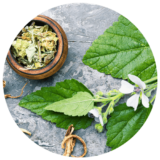
A szervezet védekezőképességéhez kapcsolódó fontos szakirodalom
G. melléklet
- COVID-19: Gastrointestinal Manifestations and Potential Fecal–Oral Transmission – Jinyang Gu, Bing Han, Jian Wang – Source: https://doi.org/10.1053/j.gastro.2020.02.054
- COVID-19 Infects GI Tract, a Possible Route of Viral Transmission – David Wild – Source: https://www.idse.net/Article/PrintArticle?articleID=57537
- Can melatonin reduce the severity of COVID-19 pandemic? – Alex Shneider, Aleksandr Kudriavtsev & Anna Vakhrusheva – Source: https://www.tandfonline.com/doi/full/10.1080/08830185.2020.1756284
- Cytokine Storm – Source: https://www.sinobiological.com/resource/cytokines/cytokine-storm?fbc
- Assessment report on Sambucus nigra L., fructus – Source: https://www.ema.europa.eu/documents/herbal-report/final-assessment-report-sambucus-nigra-l-fructus_en.pdf
- Experts send Vitamin D and Covid-19 to open letter to world’s government – Nikki Hancocks – Source: https://www.nutraingredients.com/Article/2020/12/21/Experts-send-Vitamin-D-and-Covid-19-open-letter-to-world-s-governments#
- Extract of medicinal plant Artemisia annua interferes with replication of SARSCoV2 in vitro – Sally Robertson B.Sc. – Source: https://www.news-medical.net/news/20210111/Extract-of-medicinal-plant-Artemisia-annua-interferes-with-replication-of-SARS-CoV-2-in-vitro.aspx
- Glycyrrhizin in licorice root neutralizes SARSCoV2 in vitro by inhibiting the main protease Mpro– Susha Cheriyedath M.Sc. – Source: https://www.news-medical.net/news/20210105/Glycyrrhizin-in-licorice-root-neutralizes-SARS-CoV-2-in-vitro-by-inhibiting-the-main-protease-Mpro.aspx
- Gram-Negative Sepsis: a Dilemma of Modern Medicine – ROGER C. BONE – Source: https://pubmed.ncbi.nlm.nih.gov/8457980/
- Gram-negative versus Gram-positive bacteremia: what is more alarmin(g)? – Irene Alexandraki and Carlos Palacio – Source: http://ccforum.com/content/14/3/161
- Into the Eye of the Cytokine Storm – Jennifer R. Tisoncik, Marcus J. Korth, Cameron P. Simmons, Jeremy Farrar, Thomas R. Martin, Michael G. Katzea – Source: https://www.ncbi.nlm.nih.gov/pmc/articles/PMC3294426/
- Why Some COVID-19 Patients Crash: The Body’s Immune System Might Be To Blame? – Geoff Brumfiel – Source: https://www.npr.org/sections/health-shots/2020/04/07/828091467/why-some-covid-19-patients-crash-the-bodys-immune-system-might-be-to-blame
- Selenium and RNA Virus Interactions: Potential Implications for SARS-CoV-2 Infection (COVID-19) – Laurent Hiffler and Benjamin Rakotoambinina – Source: https://doi.org/10.3389/fnut.2020.00164
- Reduction and Functional Exhaustion of T Cells in Patients With Coronavirus Disease 2019 COVID-19 – Bo Diao, Chenhui Wang, Yingjun Tan, Xiewan Chen, Ying Liu, Lifen Ning, Li Chen, Min Li, Yueping Liu, Gang Wang, Zilin Yuan, Zeqing Feng, Yi Zhang, Yuzhang Wu and Yongwen Chen† – Source: https://www.frontiersin.org/articles/10.3389/fimmu.2020.00827/full
- Epstein-barr | Mononucleosis | About Virus | Mono – Source: https://www.cdc.gov/epstein-barr/about-ebv.html
- Az endotoxin élettani hatásai – Opulus, Portal for the Pharmaceutical Industry – Source: http://www.opulus.hu/microcontamination/endotoxin/effects/effects.asp
- Gram negative sepsis and shock – S.H. Landesman, S.L. Gorbach – Source: https://pubmed.ncbi.nlm.nih.gov/358039/
- Multirezisztens kórokozók gyakoriságának változása és ennek vonatkozásai az intenzív osztályon – Szűcs Orsolya; Kristóf Katalin; Darvas Katalin; Csomós Ákos – Source: http://repo.lib.semmelweis.hu/handle/123456789/731
- Bacteriophages Could Be a Potential Game Changer in the Trajectory of Coronavirus Disease (COVID-19) – Marcin W. Wojewodzic – Source: https://www.liebertpub.com/doi/10.1089/phage.2020.0014
- Synthesis, structure–activity relationships and biological evaluation of dehydroandrographolide and andrographolide derivatives as novel anti-hepatitis B virus agents – Hao Chenab Yun-BaoMa, Xiao-Yan Huanga, Chang-An Geng, Yong Zhao, Li-Jun Wang, Rui-Hua Guoa, Wen-Juan Liangab, Xue-Mei Zhanga, Ji-Jun Chena – Source: https://www.sciencedirect.com/science/article/abs/pii/S0960894X1400287X?via%3Dihub
- In silico analysis of phytochemicals as potential inhibitors of proteases involved in SARS-CoV-2 infection –
Palaniyandi Umadevi, Subramanian Manivannan, Abdulkabeer Muhammed Fayad, Sreekumar Shelvy – Source: https://pubmed.ncbi.nlm.nih.gov/33372574/ - PelC is a Pseudomonas aeruginosa outer membrane lipoprotein of the OMA family of proteins involved in exopolysaccharide transport – Perrine Vasseura, Chantal Soscia, Romé Voulhoux, Alain Fillouxa – Source: https://www.sciencedirect.com/science/article/abs/pii/S0300908407000971?via%3Dihub
- Cloning and analysis of the gene for the major outer membrane lipoprotein from Pseudomonas aeruginosa – P. Cornelis, A. Bouia, A. Belarbi, A. Guyonvarch, B. Kammerer, V. Hannaert, J. C. Hubert – Source: https://onlinelibrary.wiley.com/doi/abs/10.1111/j.1365-2958.1989.tb00187.x
- EGYVIR: An immunomodulatory herbal extract with potent antiviral activity against SARS-CoV-2 –
Wael H Roshdy, Helmy A Rashed, Ahmed Kandeil, Ahmed Mostafa, Yassmin Moatasim, Omnia Kutkat, Noura M Abo Shama, Mokhtar R Gomaa, Ibrahim H El-Sayed, Nancy M El Guindy, Amal Naguib, Ghazi Kayali, Mohamed A Ali – Source: https://pubmed.ncbi.nlm.nih.gov/33206688/ - Study Finds Cannabis Compounds Prevent Infection By Covid-19 Virus – A.J. Herrington – Source: https://www-forbes-com.cdn.ampproject.org/c/s/www.forbes.com/sites/ajherrington/2022/01/11/study-finds-cannabis-compounds-prevent-infection-by-covid-19-virus/amp/
- Az Egészségügyi Világtanács (WCH) közreadta a tüskefehérjék semlegesítési protokollját – Dr. Joseph Mercola – Source: https://civilekatisztanlatasert.hu/az-egeszsegugyi-vilagtanacs-wch-kozreadta-a-tuskefeherjek-semlegesitesi-protokolljat/





